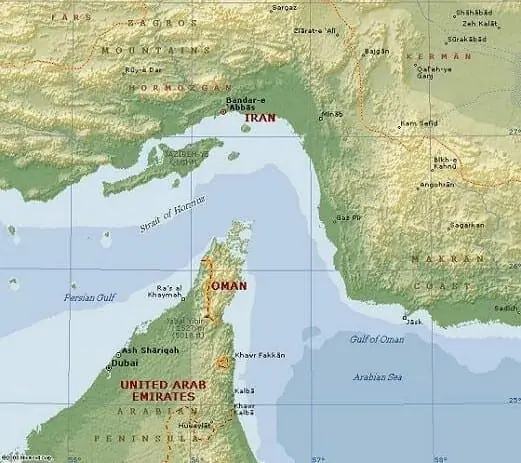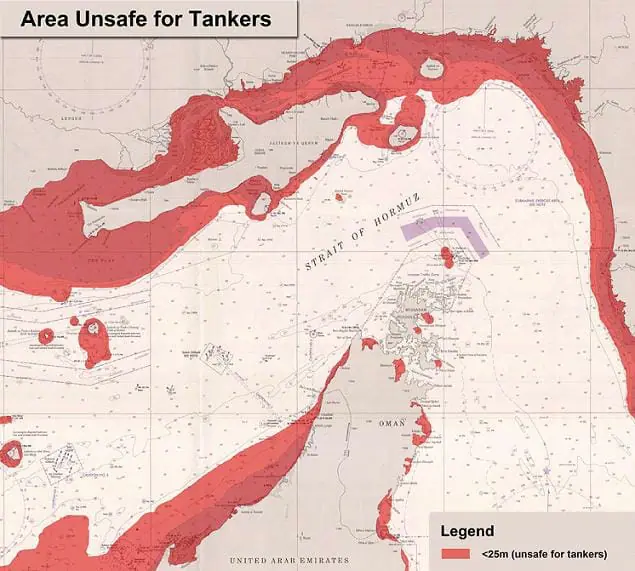In the intricate web of international politics, few waterways command the kind of strategic importance as the Strait of Hormuz.
Often dubbed the “world’s energy chokepoint,” this narrow stretch of water located between the Persian Gulf and the Gulf of Oman plays a pivotal role in shaping global energy security, regional power equations, and maritime geopolitics.
In this blog post, we’ll dive deep into the geopolitical analysis of the Strait of Hormuz, understanding its history, importance, risks, and implications—especially for countries like India.

What is the Strait of Hormuz?
The Strait of Hormuz is a narrow passage approximately 33 km wide at its narrowest point. It separates Iran to the north and the UAE and Oman to the south.
- It serves as the primary sea route for oil exports from Gulf countries.
- Nearly one-fifth of the world’s crude oil passes through this route daily.
- Major exporters like Saudi Arabia, Iraq, UAE, and Iran depend on it to ship oil and natural gas.
Why is the Strait of Hormuz a Geopolitical Hotspot?
The Strait of Hormuz has witnessed numerous military standoffs, including US-Iran naval tensions, piracy, and threats of closure by Iran in response to sanctions. Here’s why it’s constantly under geopolitical scrutiny:
Energy Dependency
Global energy markets are deeply tied to the strait. Any conflict here can spike crude oil prices globally. For oil-importing nations like India, China, Japan, and the EU, this makes the strait’s security vital.
Military Presence
The United States Navy’s Fifth Fleet is stationed in Bahrain, constantly patrolling the area.

India and the Strait of Hormuz: Strategic Implications
India is the third-largest oil importer in the world, and nearly 60% of its crude oil imports come from the Gulf region.
That means the Strait of Hormuz directly impacts India’s energy security.
Key Points for India:
- Rising Freight and Insurance Costs: Any disturbance in the strait inflates import bills for India, affecting inflation and current account deficit.
- Maritime Security: The Indian Navy has increased its patrols and collaborations in the region to ensure safe passage of Indian vessels.
Past Incidents in the Strait of Hormuz
Here are some notable flashpoints that underscore the geopolitical tension in the Strait of Hormuz:
- 2011–2012: Iran threatened closure in response to U.S. and EU sanctions. Naval standoffs escalated.
- 2019 – Oil Tanker Attacks: Two tankers were attacked near the strait. The U.S. blamed Iran, increasing regional tension.
Each of these events caused disruptions in global oil supply chains, demonstrating how a narrow waterway can have wide-reaching consequences.
Global Stakeholders and Their Roles
Several global powers have a vested interest in maintaining peace and order in the Strait of Hormuz:
- United States: Ensures open sea lanes under the principle of “freedom of navigation.”
- China: As a major oil importer, China monitors regional developments closely and engages in diplomacy to maintain trade stability.
Alternative Routes and Long-Term Solutions
- UAE’s Fujairah Port: Connected by a pipeline from Abu Dhabi, offering some relief.
Conclusion
The Strait of Hormuz is not just a geographical location—it’s a geopolitical nerve center.
Its control, safety, and accessibility are intertwined with the energy needs and foreign policy strategies of almost every major power.
For India, securing this route is not just about oil—it’s about economic stability, strategic autonomy, and regional influence.
In a volatile world, ensuring free and peaceful navigation through the Strait of Hormuz remains a priority for all.
How the global community manages this fragile balance will shape the future of energy security and peace in West Asia.
FOR MORE BLOGS – beyondthepunchlines.com

 Add to favorites
Add to favorites








